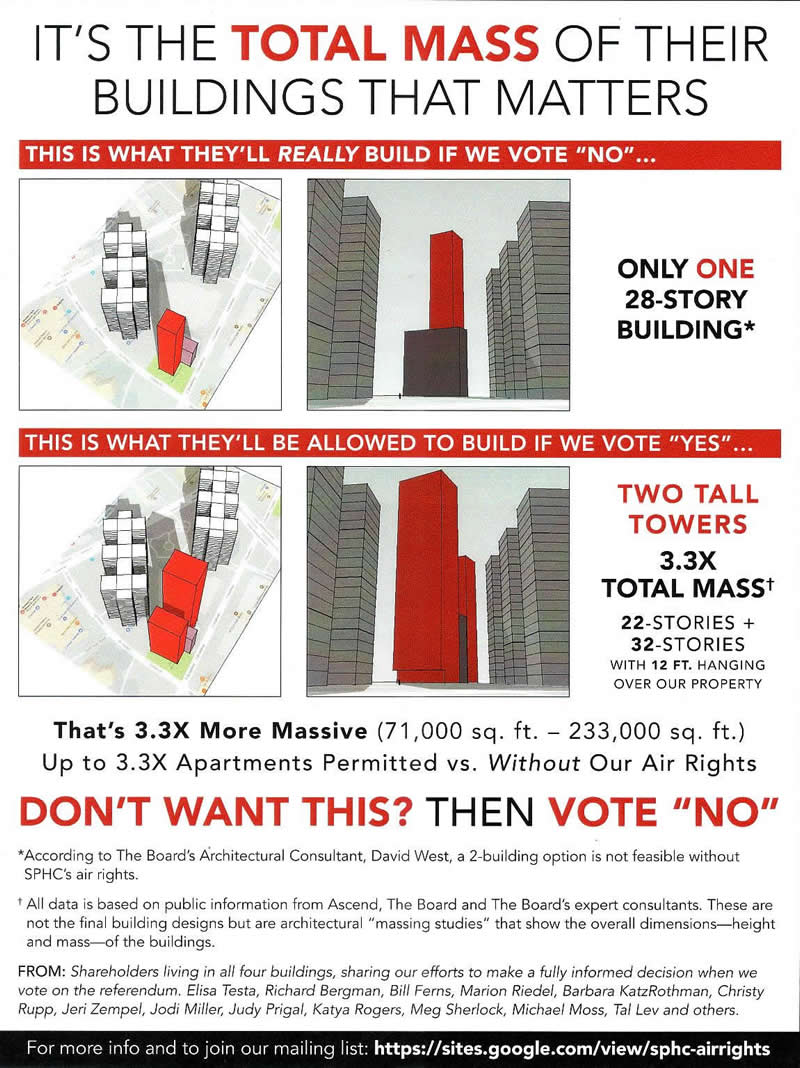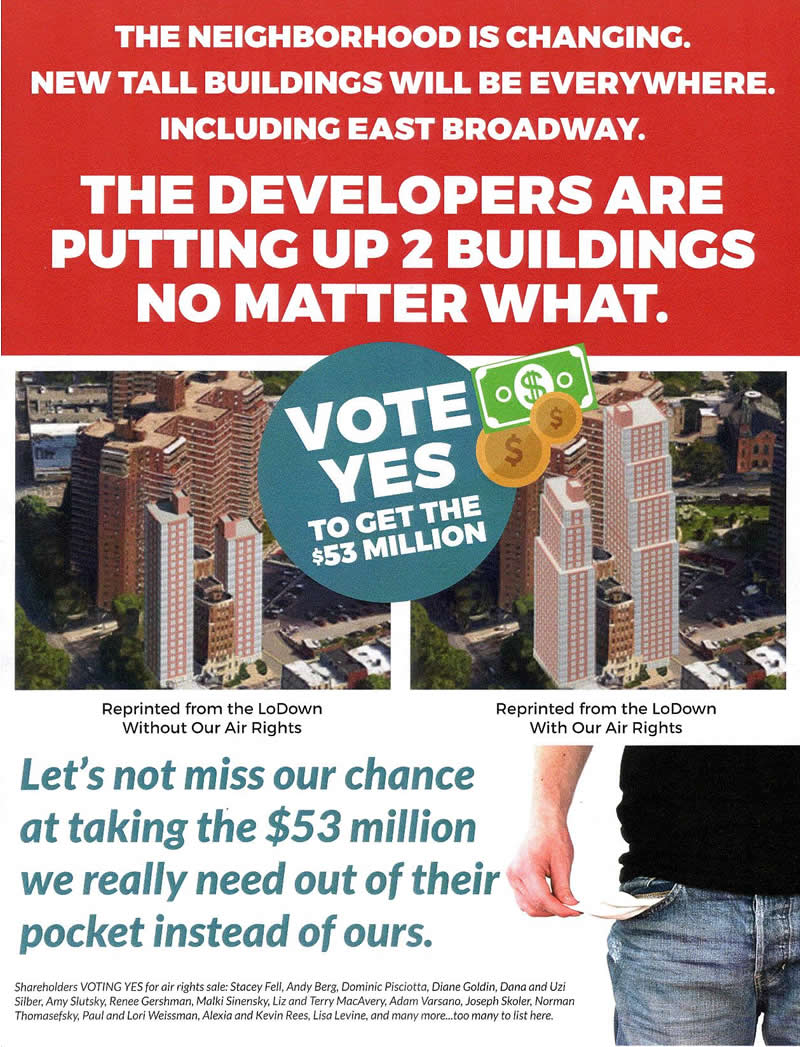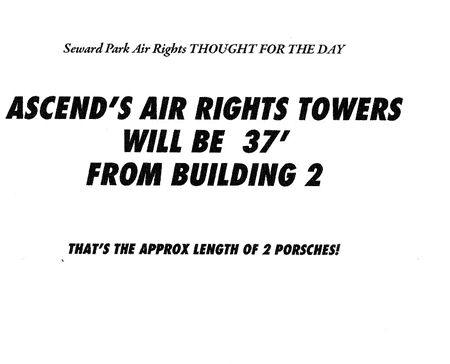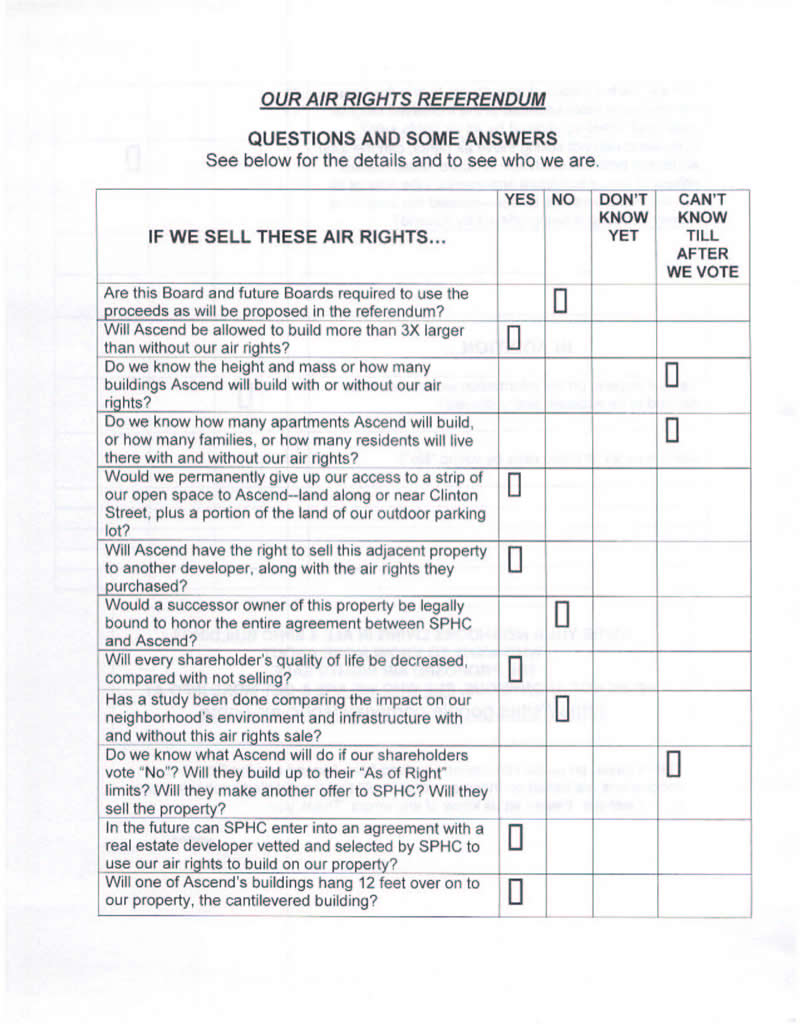 On June 12, Seward Park Cooperative will vote on whether or not to sell about 165,000 square feet of our unused development rights (aka “air rights”) to the developers of the Bialystoker Nursing Home and its adjacent lots for $53.7 million in cash. After much consideration, we believe we should vote YES.
On June 12, Seward Park Cooperative will vote on whether or not to sell about 165,000 square feet of our unused development rights (aka “air rights”) to the developers of the Bialystoker Nursing Home and its adjacent lots for $53.7 million in cash. After much consideration, we believe we should vote YES.
A YES vote is not without downsides. Nobody (except the developer) prefers huge buildings next door, and the buildings they can build with our air rights are significantly bigger than the buildings they could build as-of-right. Rainbow Park, where many of us spend much time with our families, will get a few less hours of direct sun at certain times of year. And we think the East Broadway streetscape will look better if the buildings are kept smaller.
But at the end of the day, we have a choice between bigger buildings next door, or bigger bills for all of our shareholders. We cannot justify spending tens of thousands of dollars out of each of our pockets over the coming years (and forcing many of our neighbors who already struggle to pay their bills to do the same) to keep the buildings next door smaller, when we could all save that money by accepting bigger buildings. Despite our reservations, we will be voting YES, because we think it is the right thing to do for the co-op.
Note that two thirds of those participating in the vote must say YES for it to pass. Voting in the Board election without casting a vote on the air rights question is an abstention, which is effectively a NO vote. Please be sure to vote YES or NO on the air rights question. Do not leave it blank or abstain.
Micah Arbisser, John Bellettiere, Harold Bravo, Minh Duong, Randi Halpern, Jeffrey Hillock, Linda Jones, Caroline Laskow, Brett Leitner, Terry MacAvery, Kate Nammacher, Eric Reich, Ian Rosenberg, Roshni & Jacob Sacks, Gina Sung, Alexis Tomarken, Michael Tumminia, Hilary Weissman, Lori & Paul Weissman, Jodi & Jac Zagoory
For responses to many criticisms of the deal, please click here.

 On June 12, Seward Park Cooperative will vote on whether or not to sell about 165,000 square feet of our unused development rights (aka “air rights”) to the developers of the Bialystoker Nursing Home and its adjacent lots for $53.7 million in cash. After much consideration, we believe we should vote YES.
On June 12, Seward Park Cooperative will vote on whether or not to sell about 165,000 square feet of our unused development rights (aka “air rights”) to the developers of the Bialystoker Nursing Home and its adjacent lots for $53.7 million in cash. After much consideration, we believe we should vote YES.


